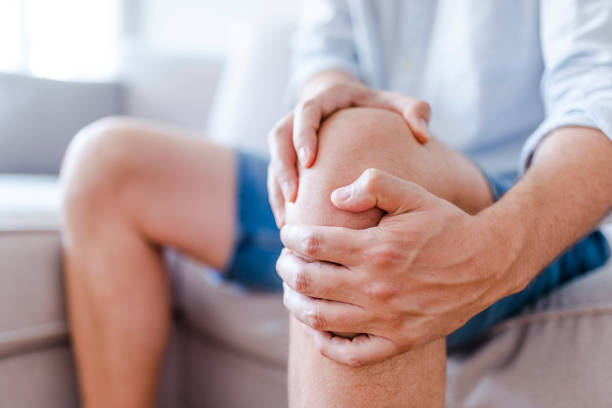
Joint pain, also called arthritis or arthralgia, can happen in any joint or the point where two or more bones meet. Symptoms include a sore sensation each time you move your joint. Painful joints can consist of wrists, elbows, shoulders, hips, knees, and ankles.
What is Joint Pain?
Joint discomfort can impair joint function and hamper a person’s ability to perform routine tasks. Severe joint pain can harm one’s quality of life. Treatment should concentrate not just on the pain but also on the activities and functions that have been affected.
Knees and Shoulders: What Do They Have in Common?
Because our knees and shoulders are both joints, they are typical sources of joint discomfort. If you’re experiencing pain in both regions, you may have joint inflammation. Other issues, such as fibromyalgia, muscle strains, and more, can also be the source of your discomfort. If the discomfort persists, consult your physician for a diagnosis.
Causes of Joint Pain
A variety of factors can cause joint pain. Finding out what’s causing it could be difficult, and treatments vary based on the underlying reason. Among them are the following:
1- Arthritis
Arthritis is the most prevalent cause of joint discomfort. Osteoarthritis (OA) and rheumatoid arthritis (RA) are the two most common types of arthritis (RA).
According to the American College of Rheumatology, it is mostly found in persons over 40. It develops slowly and usually affects joints often used, such as the wrists, hands, hips, and knees.
The breakdown of the cartilage that functions as a cushion and shock absorber for the joints may bring joint discomfort related to OA.
2- Rheumatoid Arthritis (RA)
It is a condition that causes joint inflammation, discomfort, and swelling.
Painful and stiff joints are often worse in the morning in people with RA. Chronic inflammation can damage the joints over time.
3- Gout
It causes attacks of painful inflammation in one or more joints. A gout attack can be excruciatingly painful. Gout often first occurs in just one joint, most commonly the big toe, but may affect other joints.
4- Pseudogout
Pseudogout is an inflammatory disease that affects the joints. Calcium crystals build up in the joints, causing this condition. The following are the most frequent joints:
- Knees
- Wrists
- Shoulders
- Ankles
- Feet
Pseudogout has a similar response as gout. Pseudogout attacks, on the other hand, may linger longer.
5- Bursitis
Overuse leads to bursitis, and it commonly presents in the hip, knee, elbow, or shoulder.
6- Viral Infections
Infections, rashes, or fever can make joint mobility uncomfortable.
7- Injuries
Injuries, such as broken bones or sprains
8- Tendinitis
It is a condition in which the tendons, or flexible bands that link bone and muscle, become inflamed. It is frequently caused by overuse and can be found in the elbow, heel, or shoulder.
Joint Pain: Symptoms & Signs
Your joint pain may need a visit to the doctor in some situations. If you don’t know what’s causing your joint discomfort or if you’re having other unexplained symptoms, you should schedule an appointment.
You should also see a doctor if:
- The area around the joint is visibly swollen, red, tender, or warm to the touch
- Constant pain for three days or more
- You have a fever but no other signs of the flu
Treatments for Joint Pain
The diagnosis determines the type of treatment for joint pain. Among the possibilities are:
- Self-care
- Medication
- Physical therapy
1- Self-Care Techniques
Before or after a diagnosis, there are a few simple things you may do at home:
- Heat or ice
- Topical
- Stretching with care
- Rest
- Supportive wraps
You can take good care of your joint(s) and yourself by:
- Staying up-to-date on vaccinations and regular check-ups
- Educating yourself about your diagnosis
- Doing aerobic and strengthening exercise regularly
- Eating a nutrient-rich diet
- Losing extra weight
2- Medication
Several different medications can ease joint pain. The specific type depends on your diagnosis. Some possible medications are:
- A topical or oral (by mouth) nonsteroidal anti-inflammatory drug (NSAID)
- Other painkillers (acetaminophen, opioids)
- Topical capsaicin
- Steroid joint injections
- Hyaluronic acid injections
3- Physical Therapy
By cooperating with a physical therapist, you can strengthen the muscles around the joint, stabilize the joint, and increase your range of motion.
Some other treatments include complementary and alternative treatments and, less often, surgery.
Conclusion
Normal wear and tear injury is a common cause of joint pain. It might, however, be an indication of infection or chronic RA.
If you experience unexplained joint discomfort, consult your best Orthopedic Doctor right away, especially if it doesn’t go away after a few days. Early discovery and diagnosis can help you effectively treat the underlying cause of your discomfort.
Frequently Asked Questions (FAQs)
1- What causes knee and shoulder pain on one side?
A problem with your rotator cuffs, such as tendonitis or bursitis, is the most prevalent cause of shoulder and knee discomfort on one side. Fractures, arthritis, and cervical radiculopathy are all possible causes.
2- Why do shoulder and knee pain get worse at night?
Bursitis, tendonitis, and rotator cuff injuries are the three most common disorders that cause shoulder discomfort to increase at night. Because the inflammation in each might strain on the shoulder joint, especially if the region is compressed, this is the case (as when laying on your side in bed).
3- What causes multiple joint pain without swelling?
Increased joint laxity with severe damage, as in harmless hypermobility syndrome, can cause pain in several joints in the absence of inflammation. Polyarthritis can affect peripheral and axial joints (e.g., sacroiliac, apophyseal, disco vertebral, and costovertebral).







